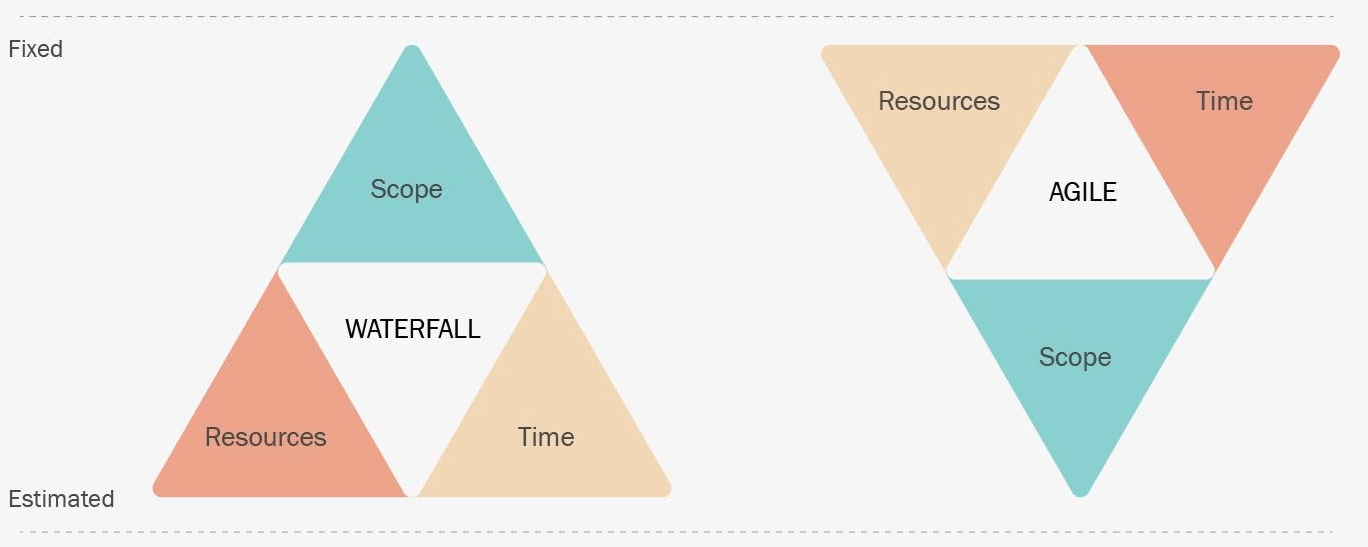Algorithmic Thinking for Data Scientists
While data scientists with computer science degrees will be familiar with the
core concepts of algorithmic thinking, many increasingly enter the field with
other backgrounds, ranging from the natural and social sciences to the arts;
this trend is likely to accelerate in the coming years as a result of advances
in generative AI and the growing prevalence of data science in school and
university curriculums. ... One topic that deserves special attention in the
context of algorithmic problem solving is that of complexity. When comparing
two different algorithms, it is useful to consider the time and space
complexity of each algorithm, i.e., how the time and space taken by each
algorithm scales relative to the problem size (or data size). ... Some
algorithms may manifest additive or multiplicative combinations of the above
complexity levels. E.g., a for loop followed by a binary search entails an
additive combination of linear and logarithmic complexities, attributable to
sequential execution of the loop and the search routine, respectively.
Job seekers and hiring managers depend on AI — at what cost to truth and fairness?

The darker side to using AI in hiring is that it can bypass potential
candidates based on predetermined criteria that don’t necessarily take all of
a candidate’s skills into account. And for job seekers, the technology can
generate great-looking resumes, but often they’re not completely truthful when
it comes to skill sets. ... “AI can sound too generic at times, so this is
where putting your eyes on it is helpful,” Toothacre said. She is also
concerned about the use of AI to complete assessments. “Skills-based
assessments are in place to ensure you are qualified and check your knowledge.
Using AI to help you pass those assessments is lying about your experience and
highly unethical.” There’s plenty of evidence that genAI can improve resume
quality, increase visibility in online job searches, and provide personalized
feedback on cover letters and resumes. However, concerns about overreliance on
AI tools, lack of human touch in resumes, and the risk of losing individuality
and authenticity in applications are universal issues that candidates need to
be mindful of regardless of their geographical location, according to Helios’
Hammell.
Comparing smart contracts across different blockchains from Ethereum to Solana

Polkadot is designed to enable interoperability among various blockchains
through its unique architecture. The network’s core comprises the relay chain
and parachains, each playing a distinct role in maintaining the system’s
functionality and scalability. ... Developing smart contracts on Cardano
requires familiarity with Haskell for Plutus and an understanding of Marlowe for
financial contracts. Educational resources like the IOG Academy provide learning
paths for developers and financial professionals. Tools like the Marlowe
Playground and the Plutus development environment aid in simulating and testing
contracts before deployment, ensuring they function as intended. ... Solana’s
smart contracts are stateless, meaning the contract logic is separated from the
state, which is stored in external accounts. This separation enhances security
and scalability by isolating the contract code from the data it interacts with.
Solana’s account model allows for program reusability, enabling developers to
create new tokens or applications by interacting with existing programs,
reducing the need to redeploy smart contracts, and lowering costs.
3 things CIOs can do to make gen AI synch with sustainability

“If you’re only buying inference services, ask them how they can account for all
the upstream impact,” says Tate Cantrell, CTO of Verne, a UK-headquartered
company that provides data center solutions for enterprises and hyperscalers.
“Inference output takes a split second. But the only reason those weights inside
that neural network are the way they are is because of massive amounts of
training — potentially one or two months of training at something like 100 to
400 megawatts — to get that infrastructure the way it is. So how much of that
should you be charged for?” Cantrell urges CIOs to ask providers about their own
reporting. “Are they doing open reporting about the full upstream impact that
their services have from a sustainability perspective? How long is the training
process, how long is it valid for, and how many customers did that weight
impact?” According to Sundberg, an ideal solution would be to have the AI model
tell you about its carbon footprint. “You should be able to ask Copilot or
ChatGPT what the carbon footprint of your last query is,” he says.
EU’s ChatGPT taskforce offers first look at detangling the AI chatbot’s privacy compliance

The taskforce’s report discusses this knotty lawfulness issue, pointing out
ChatGPT needs a valid legal basis for all stages of personal data processing —
including collection of training data; pre-processing of the data (such as
filtering); training itself; prompts and ChatGPT outputs; and any training on
ChatGPT prompts. The first three of the listed stages carry what the taskforce
couches as “peculiar risks” for people’s fundamental rights — with the report
highlighting how the scale and automation of web scraping can lead to large
volumes of personal data being ingested, covering many aspects of people’s
lives. It also notes scraped data may include the most sensitive types of
personal data (which the GDPR refers to as “special category data”), such as
health info, sexuality, political views etc, which requires an even higher legal
bar for processing than general personal data. On special category data, the
taskforce also asserts that just because it’s public does not mean it can be
considered to have been made “manifestly” public — which would trigger an
exemption from the GDPR requirement for explicit consent to process this type of
data.
Avoiding the cybersecurity blame game
Genuine negligence or deliberate actions should be handled appropriately, but
apportioning blame and meting out punishment must be the final step in an
objective, reasonable investigation. It should certainly not be the default
reaction. So far, so reasonable, yes? But things are a little more complicated
than this. It’s all very well saying, “don’t blame the individual, blame the
company”. Effectively, no “company” does anything; only people do. The controls,
processes and procedures that let you down were created by people – just
different people. If we blame the designers of controls, processes and
procedures… well, we are just shifting blame, which is still counterproductive.
... Managers should use the additional resources to figure out how to genuinely
change the work environment in which employees operate and make it easier for
them to do their job in a secure practical manner. Managers should implement a
circular, collaborative approach to creating a frictionless, safer environment,
working positively and without blame.
The decline of the user interface

The Ok and Cancel buttons played important roles. A user might go to a Settings
dialog, change a bunch of settings, and then click Ok, knowing that their
changes would be applied. But often, they would make some changes and then think
“You know, nope, I just want things back like they were.” They’d hit the Cancel
button, and everything would reset to where they started. Disaster averted.
Sadly, this very clear and easy way of doing things somehow got lost in the
transition to the web. On the web, you will often see Settings pages without Ok
and Cancel buttons. Instead, you’re expected to click an X in the upper right to
make the dialog close, accepting any changes that you’ve made. ... In the newer
versions of Windows, I spend a dismayingly large amount of time trying to get
the mouse to the right spot in the corner or edge of an application so that I
can size it. If I want to move a window, it is all too frequently difficult to
find a location at the top of the application to click on that will result in
the window being relocated. Applications used to have a very clear title bar
that was easy to see and click on.
Lawmakers paint grim picture of US data privacy in defending APRA

At the center of the debate is the American Privacy Rights Act (APRA), the push
for a federal data privacy law that would either simplify a patchwork of
individual state laws – or run roughshod over existing privacy legislation,
depending on which state is offering an opinion. While harmonizing divergent
laws seems wise as a general measure, states like California, where data privacy
laws are already much stricter than in most places, worry about its preemptive
clauses weakening their hard-fought privacy protections. Rodgers says APRA is
“an opportunity for a reset, one that can help return us to the American Dream
our Founders envisioned. It gives people the right to control their personal
information online, something the American people overwhelmingly want,” she
says. “They’re tired of having their personal information abused for profit.”
From loose permissions on sharing location data to exposed search histories,
there are far too many holes in Americans’ digital privacy for Rodgers’ liking.
Pointing to the especially sensitive matter of childrens’ data, she says that
“as our kids scroll, companies collect nearly every data point imaginable to
build profiles on them and keep them addicted. ...”
Picking an iPaaS in the Age of Application Overload

Companies face issues using proprietary integration solutions, as they end up
with black-box solutions with limited flexibility. For example, the inability to
natively embed outdated technology into modern stacks, such as cloud native
supply chains with CI/CD pipelines, can slow down innovation and complicate the
overall software delivery process. Companies should favor iPaaS technologies
grounded in open source and open standards. Can you deploy it to your container
orchestration cluster? Can you plug it into your existing GitOps procedures?
Such solutions not only ensure better integration into proven QA-tested
procedures but also offer greater freedom to migrate, adapt and debug as needs
evolve. ... As organizations scale, so too must their integration solutions.
Companies should avoid iPaaS solutions offering only superficial “cloud-washed”
capabilities. They should prioritize cloud native solutions designed from the
ground up for the cloud, and that leverage container orchestration tools like
Kubernetes and Docker Swarm, which are essential for ensuring scalability and
resilience.
Shifting left is a cultural and practice shift, but it also includes technical
changes to how a shared testing environment is set up. ... The approach scales
effectively across engineering teams, as each team or developer can work
independently on their respective services or features, thereby reducing
dependencies. While this is great advice, it can feel hard to implement in the
current development environment: If the process of releasing code to a shared
testing cluster takes too much time, it doesn’t seem feasible to test small
incremental changes. ... The difference between finding bugs as a user and
finding them as a developer is massive: When an operations or site reliability
engineer (SRE) finds a problem, they need to find the engineer who released
the code, describe the problem they’re seeing, and present some steps to
replicate the issue. If, instead, the original developer finds the problem,
they can cut out all those steps by looking at the output, finding the cause,
and starting on a fix. This proactive approach to quality reduces the number
of bugs that need to be filed and addressed later in the development cycle.
Quote for the day:
"The best and most beautiful things in
the world cannot be seen or even touched- they must be felt with the heart."
-- Helen Keller






























